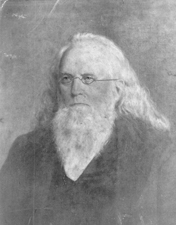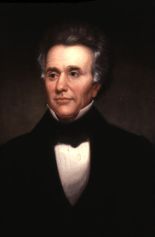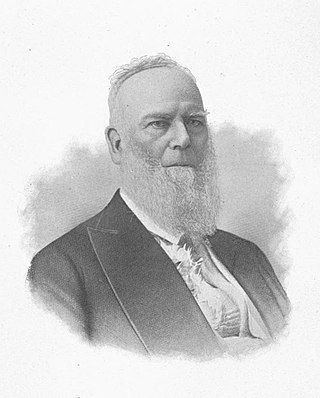Related Research Articles

The Quad Cities is a region of five cities in the U.S. states of Iowa and Illinois: Davenport and Bettendorf in southeastern Iowa, and Rock Island, Moline and East Moline in northwestern Illinois. These cities are the center of the Quad Cities metropolitan area, a region within the Mississippi River Valley, which as of 2023, had a population estimate of 467,817 and a Combined Statistical Area (CSA) population of 474,019, making it the 90th-largest CSA in the nation.

Rock Island is a city in and the county seat of Rock Island County, Illinois, United States. The population was 37,108 at the 2020 census. Located at the confluence of the Rock and Mississippi rivers, it is one of the Quad Cities along with neighboring Moline and East Moline in Illinois and the cities of Davenport and Bettendorf in Iowa. The Quad Cities had a population of 384,324 in 2020. The city is home to Rock Island Arsenal, the largest government-owned weapons manufacturing arsenal in the US, which employs 6,000 people. The original Rock Island, from which the city name is derived, is now called Arsenal Island.

The original Chicago, Rock Island and Pacific Railroad was an American Class I railroad. It was also known as the Rock Island Line, or, in its final years, The Rock.

The Grand Excursion was a promotional voyage by train and steamboat into the Upper Mississippi River valley, USA that first took place in June 1854. It marked the first railroad connection between the East Coast and the Mississippi River, and it included dignitaries such as former president Millard Fillmore. In 2004, 150 years later, the Grand Excursion route was retraced by both riverboats and a steam locomotive.

The Wheeling Suspension Bridge is a suspension bridge spanning the main channel of the Ohio River at Wheeling, West Virginia. It was the largest suspension bridge in the world from 1849 until 1851. Charles Ellet Jr. designed it and supervised construction of what became the first bridge to span a major river west of the Appalachian Mountains. It linked the eastern and western section of the National Road, and became especially strategically important during the American Civil War. Litigation in the United States Supreme Court concerning its obstruction of the new high steamboat smokestacks eventually cleared the way for other bridges, especially needed by expanding railroads. Because this bridge was designed during the horse-and-buggy era, 2-ton weight limits and vehicle separation requirements applied in later years until it was closed to automobile traffic in September 2019.

Sidney Breese, a lawyer, soldier, author and jurist born in New York, became an early Illinois pioneer and represented the state in the United States Senate as well as served as Chief Justice of the Illinois Supreme Court and Speaker of the Illinois House of Representatives, and has been called "father of the Illinois Central Railroad".

Abraham Lincoln was born on February 12, 1809, in a one-room log cabin on the Sinking Spring farm, south of Hodgenville in Hardin County, Kentucky. His siblings were Sarah Lincoln Grigsby and Thomas Lincoln, Jr. After a land title dispute forced the family to leave in 1811, they relocated to Knob Creek farm, eight miles to the north. By 1814, Thomas Lincoln, Abraham's father, had lost most of his land in Kentucky in legal disputes over land titles. In 1816, Thomas and Nancy Lincoln, their nine-year-old daughter Sarah, and seven-year-old Abraham moved to what became Indiana, where they settled in Hurricane Township, Perry County, Indiana.

Reuben Hyde Walworth was an American lawyer, jurist and politician. Although nominated three times to the United States Supreme Court by President John Tyler in 1844, the U.S. Senate never attempted a confirmation vote. Known for his simplification of equity law in the United States, Walworth served as a chancery judge in New York for more than three decades, including nearly two decades as Chancellor of New York before a new state constitution abolished that highest statewide judicial office. Walworth also ran unsuccessfully for Governor of New York in 1848, and received a commission from the U.S. Supreme Court in 1850 concerning the Wheeling Suspension Bridge.

The Government Bridge or Arsenal Bridge spans the Mississippi River, connecting Rock Island, Illinois and Davenport, Iowa. The Iowa Interstate Railroad uses the upper deck of the bridge for its ex-Chicago and Rock Island Railroad route between Council Bluffs, Iowa and Chicago, Illinois. The lower deck carries automobile traffic between the two cities. It is located near Upper Mississippi Mile Marker 483, adjacent to the Mississippi River Lock and Dam No. 15. The current structure is the fourth at this location. The bridges all were built with a swing section to accommodate traffic navigating the river.

The Clinton Railroad Bridge, also called the Chicago and Northwestern Railway Bridge or more simply the Clinton Bridge, is a bridge that carries double tracked rail lines across the Mississippi River between Clinton, Iowa, and Fulton (Albany), Illinois. The bridge is a truss bridge with a swing span crossing the main river channel and is adjacent to the Gateway Bridge. The original bridge was constructed in 1858, and the first train crossed the bridge on January 19, 1860. The bridge was the second railroad crossing over the Mississippi River. In 1870, the bridge was declared a post route, therefore stopping the occupation of steamboats and approval of railroads. From 1859 to 1908, the mileage in operation increased from 28,789 to 229,230, prompting the Chicago and North Western Railway to replace the bridge with a new structure in 1900.

The La Crosse Rail Bridge is a swing bridge that spans the Mississippi River between La Crescent, Minnesota and La Crosse, Wisconsin. The first bridge in this location initially was designed and ready to build by June 1876, and was completed in November 1876 by the Milwaukee and St. Paul Railway, a predecessor of the Chicago, Milwaukee, St. Paul and Pacific Railroad. It was later replaced in 1902. It is at the Western end of the Canadian Pacific Railway Tomah Subdivision. Amtrak's Empire Builder crosses this bridge.

The Mississippi and Missouri Railroad was the first railroad in Iowa. It was chartered in 1853 to build a line between Davenport, Iowa, on the Mississippi River and Council Bluffs, Iowa, on the Missouri River. The railroad was the first west of the Mississippi river to join by bridge to the East. It played an important role in the construction of the First transcontinental railroad although the competing Cedar Rapids and Missouri River Railroad under lease to the Chicago & North Western railroad actually became the first Iowa railroad to reach Council Bluffs from the Mississippi River. Thomas C. Durant, vice president of the Union Pacific Railroad, owned stock in both.
Davenport, Iowa, was part of the Louisiana Purchase. In 1814, during the War of 1812 the British military, along with the Saux and Fox Indian tribes fought against the Americans near Davenport. In August, Major Zachary Taylor, later President, fought a battle east of what is now Credit Island Park, in Davenport. An outpost was set up at Fort Armstrong and George Davenport and Antoine LeClaire were stationed there.
Lexecon Inc. v. Milberg Weiss Bershad Hynes & Lerach, 523 U.S. 26 (1998), was a United States Supreme Court case in which the Court unanimously held that a district court conducting coordinated pretrial proceedings in multiple cases by designation of the Judicial Panel on Multidistrict Litigation under 28 U.S.C. § 1407(a) has no authority to reassign a transferred case to itself for the actual trial of the case. The Court's decision overturned numerous lower-court decisions upholding what had become a common practice in multi-district cases.

Robert Cooper Grier was an American jurist who served on the Supreme Court of the United States.

William Penn Lyon was an American lawyer, politician, and judge who served as the 7th Chief Justice of the Wisconsin Supreme Court and the 12th Speaker of the Wisconsin State Assembly. He also served as a Union Army officer in the American Civil War.

John Dean Caton was an associate justice and chief justice of the Illinois Supreme Court.
United States v. Terminal Railroad Association, 224 U.S. 383 (1912), is the first case in which the United States Supreme Court held it a violation of the antitrust laws to refuse to a competitor access to a facility necessary for entering or remaining in the market. In this case a combination of firms was carrying out the restrictive practice, rather than a single firm, which made the conduct susceptible to challenge under section 1 of the Sherman Act rather than under the heightened standard of section 2 of that act. Even so, the case was brought under both sections.
References
- ↑ McGinty, Brian. Lincoln's Greatest Case: The River, the Bridge, and the Making of America. United States: Liveright, 2015.
- 1 2 3 4 Pfeiffer, David A. (Summer 2004). "The Railroads and Steamboats Clash at the Rock Island Bridge". Prologue Magazine. Vol. 36, no. 2. National Archives. Retrieved March 9, 2020.
- 1 2 Ely, James W. Jr. (2005). "Lincoln and the Rock Island Bridge Case" (PDF). Biennial Railroad Symposium 2005: Lincoln and the Railroads. Retrieved March 9, 2020.